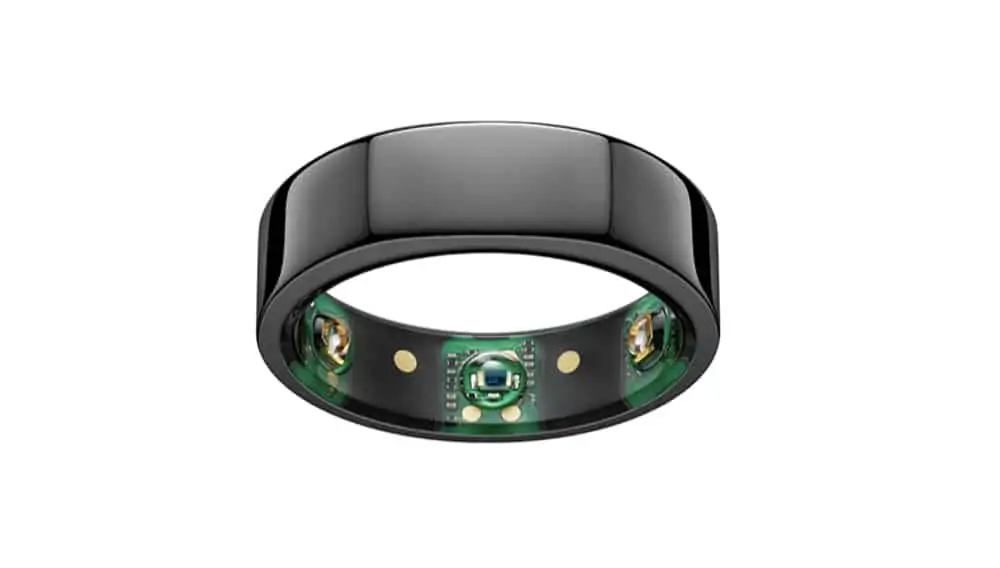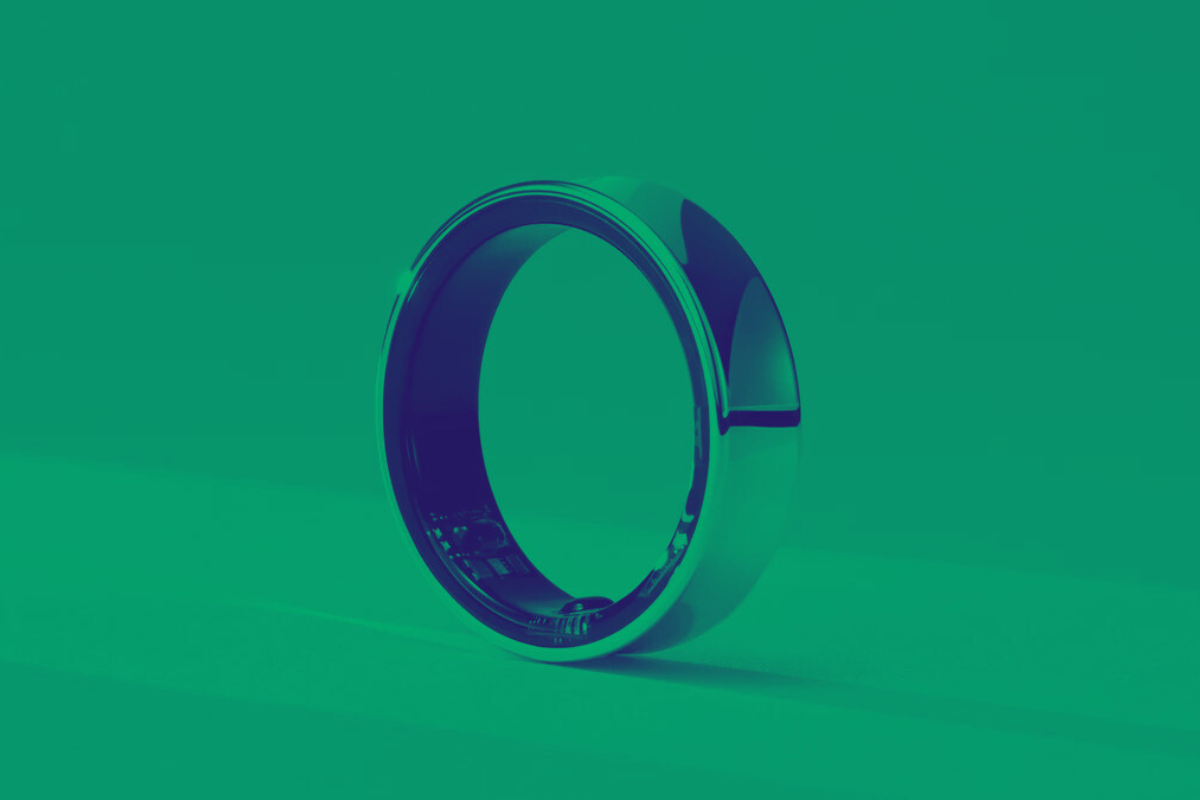Samsung’s about to storm Oura’s finger-based fitness tracking niche with the release of its Galaxy Ring – but will it be better? Let’s find out…
TL;DR
Samsung Galaxy Ring vs. Oura Ring…
Ecosystem:
- Samsung: Integrates with Samsung devices; initially may only work with Samsung phones.
- Oura: Supports both Android and iOS, appealing to a broader audience.
Sales Strategy:
- Samsung: May bundle with new Samsung phones for better initial sales.
Pricing & Subscription:
- Samsung: $300-$350, potential $10 monthly fee.
- Oura: $299, $5.99 monthly fee for advanced features.
Battery Life:
- Samsung: Up to 9 days.
- Oura: Typically 5 days.
Features:
- Samsung: ECG, atrial fibrillation detection, Samsung Health integration.
- Oura: 20 biometric signals, including sleep and activity tracking.
Design Options:
- Samsung: Black, Gold, Silver.
- Oura: Silver, Black, Gold, Stealth.
Wearing a ring fitness tracker is still a pretty niche activity, most users tend to prefer smartwatches, either from Garmin, Samsung or Apple. The Oura Ring has been around for a while, operating pretty much by itself in the smartring niche. But it’ll soon have some stiff competition in the form of Samsung, with its Galaxy Ring.
So, the obvious question here is this: will Samsung’s Galaxy Ring be better than the Oura Ring? How will Samsung outdo what Oura does with its hardware? A me too product won’t fly, so Samsung needs to pull out all the stops with the Galaxy Ring.
I was at the initial launch of the Galaxy Ring at MWC 2024, where plenty of stuff, albeit in a rather vague fashion was confirmed, but the actual launch for the Galaxy Ring takes place on July 10 at Samsung’s Unpacked 2024 event.
Here’s my hot-take on everything you need to know about how Samsung’s Galaxy Ring compares to the already-established Oura Ring…
Samsung Arguably Has A Better Ecosystem For The Galaxy Ring, Whereas Oura Relies On Cross-Platform Support

Oura made its ring available to all, Android and iOS users. All you need is the hardware and an app. Samsung does things differently, however, it already has an established base of users, across a range of devices – from phones to tablets (and smartwatches).
This should help Samsung with initial sales. If you’re buying a new Samsung phone and the Galaxy Ring is offered as part of a deal (which I reckon it will be), most people would bite Samsung’s hand off to access this shiny, new fitness wearable.
The potential downside to Samsung’s focus on its ecosystem is that, at least initially, the Galaxy Ring might only work with Samsung phones. If that’s the case, Samsung is ignoring a huge segment of the market – namely iPhone users, but also other Android brands like Pixel and OnePlus which would give Oura a distinct advantage.
Having said that, adoption of these types of fitness trackers isn’t exactly setting the world ablaze, so perhaps Samsung’s focussed ecosystem-first approach is actually a pretty shrewd move; if the Galaxy Ring takes off, it can open it up to other platforms. If not, it can just run it like Bixby.
Pricing and Subscription
The Samsung Galaxy Ring is rumored to cost between $300 and $350, with a potential $10 monthly subscription fee. The Oura Ring is priced at $299, with a $5.99 monthly membership for advanced features.
I don’t like the idea of paying big chunks of cash for something and then having to pay a monthly subscription fee. There’s already too many subscriptions these days, so Samsung would be wise to address this consumer pain point and make its software free to all users.
Apple doesn’t make you pay to access its health features via Apple Watch and Garmin’s is bloody brilliant too – both cost nothing and deliver spades of useful, actionable data. If Samsung wants to dominate Oura, offering a subscription-free model is the way to go.
Battery Life
Samsung’s offering reportedly provides up to 9 days of use between charges, while the Oura Ring lasts up to a week, typically around 5 days in practice.
We’ll know more about battery performance once the reviews are out but I’m still slightly confused about why the battery life isn’t better. There is no screen, the main source of power drain on a smartwatch, and no ways to really interact with the devices.
Prior to the Oura launch, I was expecting 30 days or more battery life. Then the reality set it: despite not having screens or being as practically useful as a smartwatch, these “smart rings” still cannot beat some of Garmin and Polar’s smartwatches in the battery life stakes.
Features
The Samsung Galaxy Ring is expected to include an ECG sensor, atrial fibrillation detection (pending FDA approval), and integration with Samsung Health’s AI-powered insights.
The Oura Ring offers 20 biometric signals, including sleep tracking, activity monitoring, and temperature sensing for cycle tracking. On paper, it would appear that Oura has Samsung bang to rights.
However, Samsung’s focus on things like atrial fibrillation detection is where the Galaxy Ring might earn its loyal followers. Apple Watch already does this, of course, so it’s not exactly a USP. The only USP here would be that you could monitor for longer stretches of time, including through the night which is often when afib strikes.
Design Options
The Samsung Galaxy Ring will be available in Black, Gold, and Silver, while the Oura Ring is offered in Silver, Black, Gold, and Stealth.


They both look like, well… rings. In this context, there’s very little to separate them – a ring looks like a ring, there’s just no way of creatively writing around that fact.
Oura does offer one more color option, STEALTH, so if color is your thing and you don’t run a Samsung phone, Oura has the slight edge.
Who Is The Galaxy Ring / Oura Ring Actually Aimed At?
The Samsung Galaxy Ring is primarily targeting users already invested in the Samsung ecosystem. This includes owners of Samsung smartphones, tablets, and other Galaxy devices. The ring is designed to seamlessly integrate with these products, offering a cohesive user experience within the Samsung Health app. This strategy appeals to consumers who value a unified ecosystem and prefer to keep their devices within a single brand’s offerings.
Samsung is likely aiming at health-conscious individuals who want detailed health metrics but prefer a more discreet wearable than a smartwatch. The ring may particularly appeal to Samsung users who find traditional fitness trackers or smartwatches uncomfortable for 24/7 wear or too obtrusive during sleep.
In contrast, the Oura Ring casts a wider net. Its compatibility with both iOS and Android platforms makes it accessible to a more diverse user base. Oura targets health enthusiasts, fitness trackers, and individuals interested in detailed sleep analysis regardless of their smartphone preference. The Oura Ring has also gained popularity among professional athletes and teams, positioning itself as a high-end health tracking tool for performance optimization.
You’ll Have To Pay For Data With Oura, And Potentially The Samsung Galaxy Ring Too – Although There Should Be A Free Tier

The Samsung Galaxy Ring is expected to leverage the existing Samsung Health app infrastructure. This approach may allow Samsung to offer a range of free features to users straight out of the box. These could include basic activity tracking, sleep monitoring, and integration with other Samsung Health data points collected from smartphones or watches.
Samsung might follow a tiered approach, providing essential health metrics for free while gating more advanced analyses and AI-driven insights behind a premium subscription.
This strategy would align with Samsung’s ecosystem-centric approach, potentially offering more value to users who fully commit to the Samsung ecosystem.
The Oura Ring, on the other hand, has a clearer subscription model. While the ring itself provides data collection, full access to personalized insights, detailed sleep analysis, and live heart rate tracking requires a monthly subscription.
This model allows Oura to continuously develop and improve its AI algorithms and provide regular feature updates to subscribers.
Oura’s approach means that users get access to a comprehensive suite of features and insights, but at an ongoing cost. This model has allowed Oura to position itself as a premium health tracking solution, with the subscription fees supporting continuous development and personalized health recommendations.
Both approaches have their merits, with Samsung potentially offering more immediate value to existing Galaxy users, while Oura provides a more specialized, subscription-based health tracking experience regardless of the user’s smartphone ecosystem.
Launch Status
The Samsung Galaxy Ring is newly announced, with an expected launch in July 2024. The Oura Ring is an established product with multiple generations and ongoing feature updates.
While both devices aim to provide comprehensive health tracking in a ring form factor, the Samsung Galaxy Ring appears to be positioning itself as part of a broader ecosystem play, while the Oura Ring maintains its status as a more independent, cross-platform solution.


